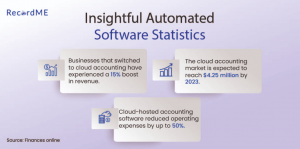A love-hate relationship with the latest technology is always there every time IT introduces something new in the market. These advancements are exciting but businesses have to worry about what is left behind. Advanced tools in the finance sector aren’t something new. Artificial Intelligence(AI) has thrilling potential for the industry but few accountants may wonder how to utilize digital bookkeeping services without losing the employee’s involvement. The most confusing question is that using digital bookkeeping puts CPAs out of business.
It’s easy to get anxious with the rumors that digital bookkeeping will take over the entire manual tasks. But, the point is that instead of getting anxious, companies should embrace reality and find some ways to polish their skills rather than replace employees.
Are Online Bookkeeping Services Secure?
One of the primary reasons that financial institutes start using digital bookkeeping is privacy and safety concerns. While many companies start using automated bookkeeping to ensure that no one can access passwords, transactions, and banking information. That’s why security and privacy are the main concern of many institutes.
A few things should be kept in mind about how automated bookkeeping can serve the finance industry.
1) Embrace Digital Bookkeeping Services
Educate company employees on the AI potential to improve business productivity. Invest in advanced systems and let them learn slowly as it’s a sluggish procedure that needs time. But, if the owner is worried that it will make employees obsolete, consider that one professional predicts that digital bookkeeping can increase employees’ productivity by 40%. Certified courses should be provided to employees so that they can specialize in data management and AI to take full advantage of this advanced technology.
2) Delegate Mundane Tasks
The primary step to utilize digital bookkeeping for any financial institute is recognizing tasks where it provides the maximum benefit. Automated bookkeeping is ideal for mundane, repetitive tasks like auditing, payroll, uploading files, etc. It is perfect for sorting and compiling a considerable amount of data. This is where organizations witness a boost in productivity while offering additional time to accountants to work on critical and creative tasks.
When a company has so much to do that they wish to execute if they have an extra set of hands, digital bookkeeping is that extra set that will make sure to execute even little things.

3) Balance Human Intelligence with AI
While digital bookkeeping is an excellent tool, it isn’t something that can replace employees in all tasks. There are few things that only humans can do better, like knowing about clients’ details, needs, and plans for the future. Employees can easily craft personalized financial analyses to help the company to achieve their tasks. Then just let digital bookkeeping software take care of busy tasks so that employees can easily get and use results to construct a roadmap for customers.
It will also help them to understand financial reports easily and can make decisions based on accurate figures.
1) Adapt Digital Bookkeeping to Change Employees Roles
Everyone agrees that the technology available to accountants is constantly evolving so does the client’s needs. Organizations in every industry are going through a fast-paced and progressive world. That’s why they are searching for something additional from their employees to help them thrive. Employees shift their tasks from number-crunchers who distribute detailed, thick bundles of financial reports, and obviously digital bookkeeping is there to assist.
Vibrant and concise financial statements with thought-provoking analyses that customers can easily understand are essential. Digital bookkeeping can be utilized to generate reports, provides additional time to employees to polish their analytical skills, and modify the analysis according to customers’ needs.
2) Eliminate Distractions
“Client liked the final product” it’s a response every employee loves to see. No doubt that employees get distracted with massive financial figures at hand. With technology that is always evolving, social media and new apps enable companies to communicate with anyone on this planet at any time. It’s difficult to remain focused if employees aren’t trained enough. Moreover, social media is very disturbing, especially the notifications that someone likes the picture and so on.
Companies can’t completely neglect and delete all social media accounts as these are crucial elements of life these days. But if social media is distracting employees’ productivity then it’s necessary to try to reduce these activities at the workplace. But, if social media is as important then use automated bookkeeping services to schedule crucial posts in advance. Also, restrict screen time to shift employees’ concerns from these productivity killers.
3) Be Proactive, not Reactive
Emails and phone calls are no. 1 enemy of employees. There’s always someone who needs instructions to fix a problem or someone who wants an opinion on certain topics or someone who asks for advice. They drifted away from the concern of being deeply focused on work. That’s why writing an easy approach to manage all types of incoming requests “ just creates a specific time slot to manage all phone calls and emails’ ‘. Just dedicate 45 minutes each evening to respond to unanswered phone calls, emails and other messages and ask someone to help with it. The other option is to acquire digital bookkeeping services and hand over all these tasks to this software.
In the end, we are all humans, neither machines nor successful robot entrepreneurs. However, one can always strive to improve efficiency and productivity to assure maximum success.
How RecordMe can Improve Employee Productivity?
RecordMe provides many online bookkeeping services over hundreds of data points. We considered features, prices, ease of time, service level, integrations, and customer service. We also examine real-time customer experience to analyze if their expectations meet in contrast to what we offer.







